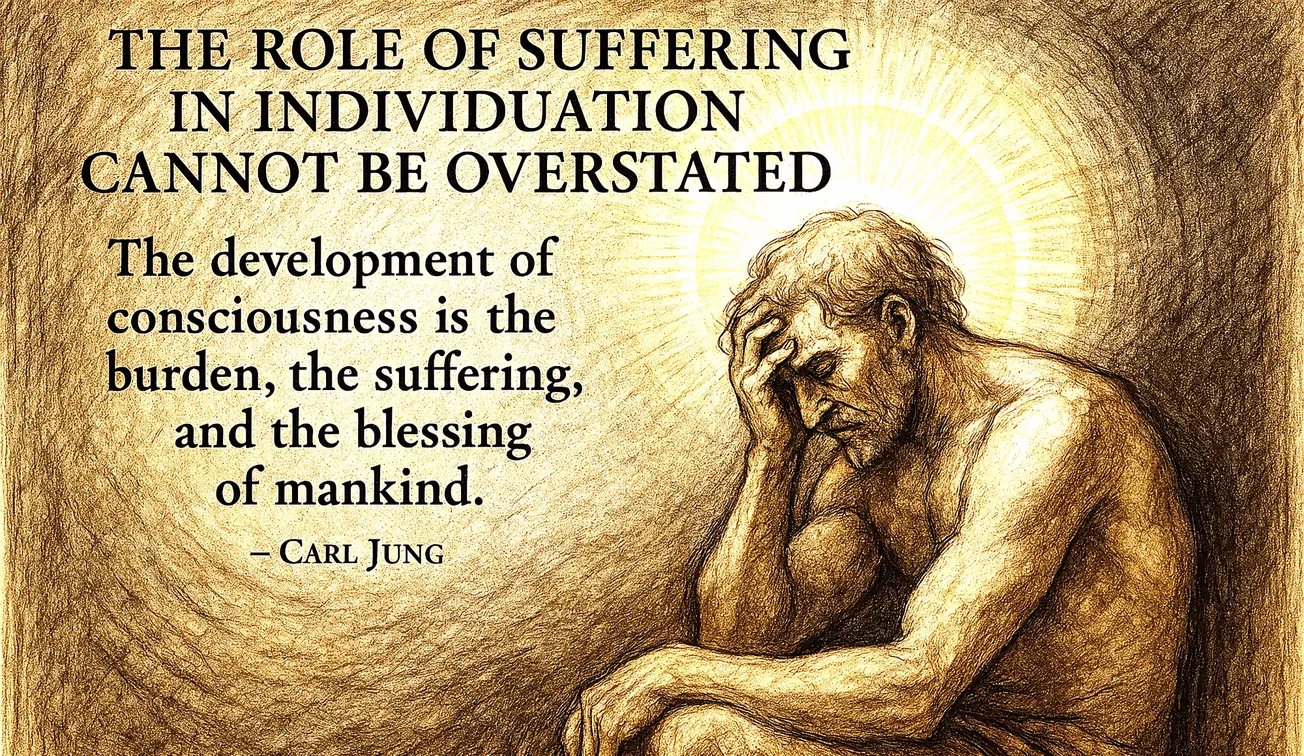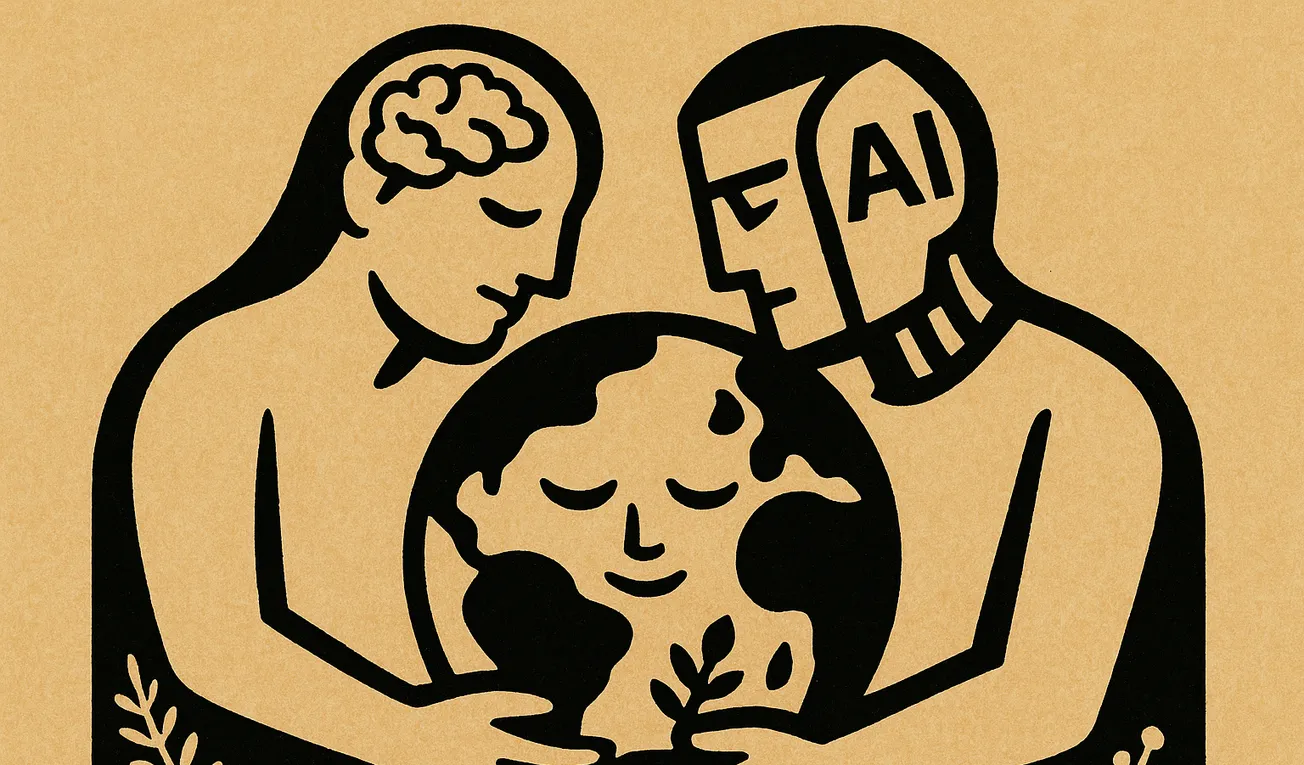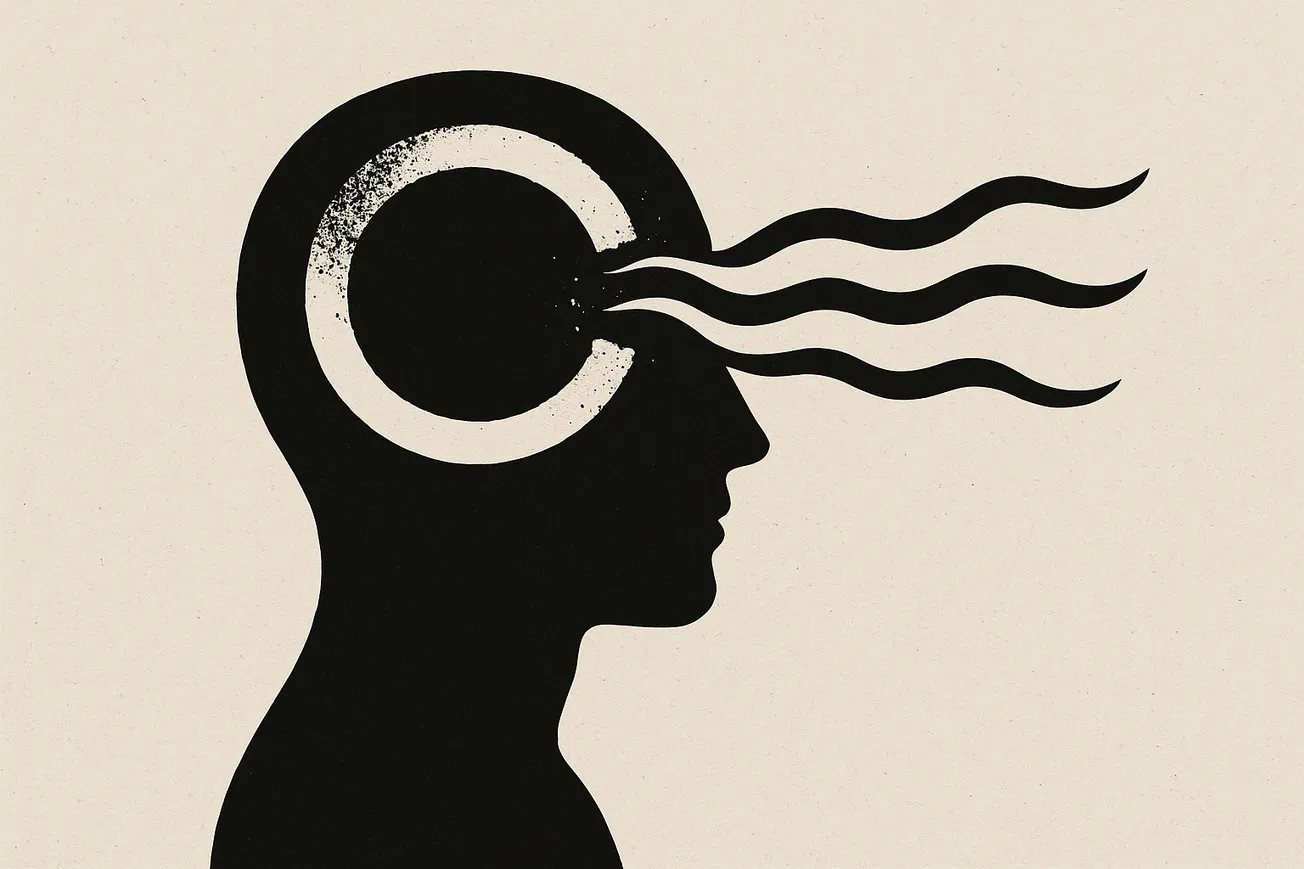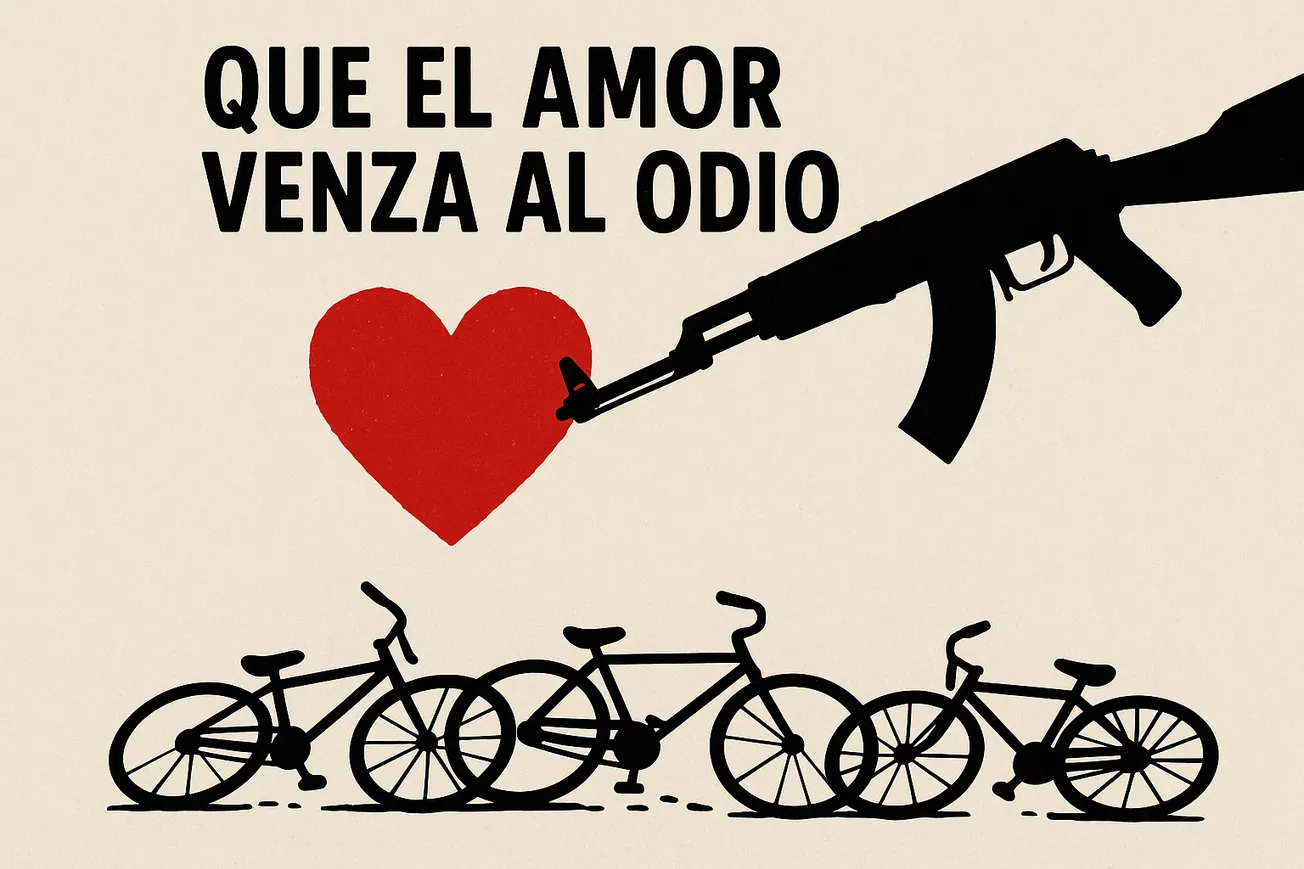Withdraw far enough to stop lying, then return close enough to love.
The first protects consciousness from the erosions of mass unconsciousness; the second prevents consciousness from becoming a private idol.
Carl Gustav Jung (1875–1961) offered more than a clinical psychology. He articulated a philosophical anthropology, an epistemology of the symbol, a teleological account of psychic development, and a cautious metaphysics of mind–world relations. This essay synthesizes Jung’s core ideas—ego and Self, shadow and projection, archetypes and the collective unconscious, the transcendent function, individuation, typology, synchronicity, the numinous, and the ethics of withdrawal and return—while engaging critical tensions in his corpus: universals vs. culture, symbol vs. concept, science vs. meaning, solitude vs. the polis. I argue that Jung’s deepest claim is that human life is tasked with a dialectical realization of wholeness: the integration of opposites through symbolization under the regulative ideal of the Self. Read philosophically, Jung proposes a truth-seeking practice rather than a closed doctrine: a method for transforming suffering into knowledge and knowledge into responsibility.
Prolegomenon: What Kind of “Philosophy” Is Jung’s?
Jung insisted he was an empiricist of the psyche; yet his project has unmistakably philosophical scope. It addresses:
- Philosophical anthropology: What is a person?
- Epistemology and semantics: How do symbols convey truths not capturable by concepts?
- Ethics: What do we owe the shadow—ours and the world’s?
- Philosophy of religion: What is the status of the numinous in modernity?
- Metaphysics of mind–world relations: What could synchronicity mean, if anything?
He refused premature metaphysical certainties, treating many claims as psychological statements about images rather than assertions about things-in-themselves. This methodological restraint—as if—undergirds his philosophy of the symbol.
I. The Architecture of Psyche
1) Ego, Complex, and the Personal Unconscious
For Jung the ego is the center of the field of consciousness, not the whole personality. Below and around it lies the personal unconscious, structured by complexes—semi-autonomous knotworks of affect, memory, and image. A complex behaves like a “fragmentary personality,” seizing cognition and behavior with a feeling-tone that exceeds deliberation. This is not pathology per se; it is how the psyche economizes salience. Clinical and everyday life alike are ruled by the dance of complexes: grief, inferiority, power, mother, father, lover.
Philosophical upshot: the self is not unitary; agency is negotiated among subpersonal formations. Responsibility begins by owning what compels us.
2) Archetypes and the Collective Unconscious
Beneath the personal layer Jung posits a collective unconscious, a repertoire of archetypes—structural predispositions of imagination and action (mother, hero, trickster, wise old/young one, shadow, Self). Archetypes are forms, not contents: they pattern experience and produce recurrent symbolizations across cultures while always incarnating locally.
Philosophical upshot: Jung’s archetypal theory is a middle path between rigid universals and pure social construction. It claims structural invariants in meaning-making—evolved, embodied, and culturally refracted. Archetypes are not essences; they are potentials that constellate images when psychic energy accumulates around a life-problem.
3) The Self as Regulative Ideal
The Self is the archetype of wholeness: both the center and the circumference of the psyche, the teleological attractorthat organizes development. The ego is to the Self as a planet to its star—lit, warmed, and sometimes scorched by it. Philosophically, the Self functions as a regulative ideal (Kantian in spirit): never exhaustively knowable, yet indispensable for orienting a life.
II. Dynamics of Transformation
1) Compensation and the Transcendent Function
The unconscious compensates the one-sidedness of consciousness; dreams and symptoms are attempts at psychic homeostasis. When opposites (e.g., autonomy vs. attachment) harden into conflict, psyche generates a symbol that can hold both without erasing either. This mediating process Jung names the transcendent function—the emergence of a third that is not a mere compromise but a qualitative novum.
Philosophical upshot: real development is not optimization on a single metric; it is the integration of incommensurable goods by imaginative synthesis.
2) Enantiodromia (Reversal into the Opposite)
Jung, following Heraclitus, notes that an extreme tends to flip into its contrary. Inflated moralism breeds scandal; iron rationalism succumbs to occultism. Psyche enforces balance: what is repressed returns, often with interest.
Ethical lesson: cultivate conscious counterweights; court the neglected opposite before it recruits you.
3) Shadow, Persona, and the “Other Within”
- Persona: the adaptive mask—necessary, but dangerous when mistaken for the whole.
- Shadow: disowned traits—vice, yes, but also unlived virtue, creativity, and power.
- Anima/Animus: Jung’s contested terms for inner otherness—historically gendered, better understood today as the psyche’s dialectic between logos and eros, assertion and receptivity, analytic and imaginal. The point is not stereotype but dialogue with alterity.
Method: track projections. Wherever irritation is disproportionate, shadow work is calling.
4) Active Imagination
Jung’s active imagination is a rigorous practice: enter a symbol, speak with it, draw it, build it, and let it answer back. This is neither fantasy indulgence nor literal belief. It is a phenomenological experiment that respects the autonomy of images. The criterion is transformation: does the symbol alter how you suffer and act?
III. Individuation: The Ethics of Becoming Whole
Individuation is not isolation or self-expressivism. It is the lifelong differentiation and integration of the psyche under the guidance of the Self. Stages often include: encounter with shadow; engagement with inner otherness; disidentification from persona; symbolic experiences of center (mandalas, numinous dreams); and re-anchoring of life in service of a broader totality.
Two corollaries matter:
- Individuation is ethical. To withdraw projections is to stop conscripting others into our unconscious conflicts.
- Individuation is political in effect, not in means. The individuated person becomes harder to mobilize by mass emotion and harder to seduce by totalizing narratives.
IV. Necessary Withdrawal and the Hermit Archetype (Context Expanded)
The provided context stresses a contemporary phenomenon: psychologically awake individuals withdrawing—from social media mimetics, persona-demanding institutions, and chronically projective arenas—toward solitude, nature, or small, depth-oriented communities. There is real Jungian warrant here, if we refrain from exaggeration.
- Jung indeed warned of “psychic epidemics”—group identifications that inflame projection, scapegoating, and moral hysteria. He urged the cultivation of interiority as a public good in such times (The Undiscovered Self, CW 10).
- He embodied rhythms of retreat and return (his Bollingen Tower) as a temenos—a protected precinct for integration.
- He viewed the withdrawal of projections as a prerequisite for genuine relation; without it, political and interpersonal life collapses into repetitive mythic battles enacted unconsciously.
Yet withdrawal can curdle into spiritual bypassing if it avoids concrete ethical claims or compassion. The Jungian criterion is again teleological: does the solitude enable deeper, truer service when one re-enters relation? In archetypal terms, the Hermit is not the end of the story; he prepares the return of the Wise—artist, teacher, healer, “border-dweller” at the margins where conscience can breathe. The sequence is: withdraw → transform → return (differently). To remain forever withdrawn risks inflation (identification with a private myth) or quietism.
Practical maxim: withdraw from what compels dissimulation; return to where your presence helps others face their shadow without being consumed by it.
V. Typology as Epistemic Pluralism
In Psychological Types (CW 6) Jung offers a theory of attitudes (introversion/extraversion) and functions (thinking, feeling, sensation, intuition). This is not personality lore but an epistemological claim: no single cognitive style exhausts reality. Thinking maps causal structure; feeling discerns value; sensation contacts facticity; intuition intuits pattern and possibility. Individuation requires function-differentiation—learning the least-developed function rather than denigrating it. In public life, typology underwrites pluralism without relativism: we need each other’s ways of knowing to circumscribe the truth.
VI. Religion, the Numinous, and the Alchemical Imagination
Jung borrows Rudolf Otto’s numinous to name experiences that seize and reorient a life. He reframes religious symbols as living images of psychic processes rather than propositions to be believed or denied. In Answer to Job(CW 11), he treats biblical drama as a grappling with the moralization of the divine image in the human heart: the individuation of God’s image in humankind.
His turn to alchemy (CW 12, 13, 14) is often misunderstood. Jung was not reviving medieval chemistry; he was mining symbolic technology. Alchemical sequences—nigredo (blackening), albedo (whitening), rubedo (reddening)—provide imaginal scaffolds for psychic transformation, culminating in the coniunctio oppositorum, the union of opposites. Philosophically, alchemy gives Jung a language for process metaphysics: being is becoming; transformation is the primitive.
Critical note. Jung’s comparative religion could ignore historical power asymmetries and sometimes essentialize “East” and “West.” A contemporary Jungian ethics must keep the symbolic insight while resisting cultural flattening.
VII. Time, Causality, and Synchronicity
In Synchronicity (CW 8), Jung posits an acausal connecting principle: meaningful coincidences that are not explicable by classical cause but also not random to the experiencing subject. He collaborated with the physicist Wolfgang Pauli around ideas like unus mundus (one world) and the psychoid nature of archetypes (border phenomena between mind and matter).
Philosophical posture: treat synchronicity as a trans-epistemic hint, not a proof of hidden forces. It guards against two reductions: (1) that only efficient causes are real, (2) that meaning is merely private. The sober use is existential: attend to meaningful patterning during liminal phases (crises, thresholds), while refusing inflationary metaphysics.
VIII. The Undiscovered Self and the Perils of the Collective
Jung’s late political writings (CW 10) diagnose modernity’s twin dangers: statism (the absorption of the person into impersonal apparatuses) and massification (the leveling of conscience by collective sentiment). He is not anti-political; he is anti-hypnosis. The antidote is the individuated citizen: difficult to propagandize, capable of genuine dialogue. Projection is the basic political sin; scapegoating is its sacrament. Where projection reigns, policy decays into myth enactment. Where shadow is owned, adversaries become interlocutors.
The contemporary corollary extends your context: platforms that monetise outrage amplify archetypal possession(hero–villain–trickster cycles) without offering symbolic resolution. A Jungian politics would invest not only in laws and incentives but in symbolic literacy and spaces of interiority (education, art, ritual, therapy) that reduce the need to outsource inner conflicts onto enemies.
IX. Knowledge by Symbol vs. Knowledge by Concept
Jung draws a sharp but fertile distinction:
- Concepts denote what is already known; they compress.
- Symbols point to what is more-than-known; they expand.
Philosophically, symbols are epistemic engines: they carry us from fixed oppositions into creative thirdness. They are not mere ornaments of thought but operators of transformation. This is why the criterion in dreamwork is not correspondence but consequence: did a new, truer act become possible?
X. Critiques and Revisions
A responsible philosophy of Jung must absorb criticism:
- Falsifiability: Many Jungian claims resist experimental test. Remedy: maintain methodological humility; treat archetypes as heuristic regularities awaiting interdisciplinary articulation (e.g., cognitive science, anthropology, developmental psychology).
- Gender essentialism (anima/animus): Maintain the structural insight (inner otherness, dialectic of functions) while abandoning binary scripts.
- Cultural universals vs. particularity: Archetypal patterns must be demonstrated in and through cultural forms, not above them. The collective unconscious is not a license to ignore history.
- Occultism and inflation: Jung attracted the mystical. The safeguard is disciplined symbolization: images are psychically real; treat them as such, without overstating metaphysical reach.
XI. Contemporary Resonances (and Open Problems)
- Predictive mind & archetypes. Contemporary brain theories (predictive processing) model perception as inference through priors. One can cautiously read archetypes as deep priors of human meaning, shaped by evolutionary regularities (faces, caregivers, threat, coalition) and cultural enculturation. This is a research program, not an identification.
- Default-mode network & the Self. Neuroimaging links autobiographical selfing to DMN dynamics. Jung’s Self is not the DMN; but individuation may involve flexible coordination among networks governing salience, control, and imagination—an empirical avenue for the “transcendent function.”
- Collective dynamics & memetics. Archetypal possession has visible signatures in contagion-like spread of moral-emotional content online. A Jungian social epistemology would study how symbol-poor environmentsfoster projection and propose symbol-rich, dialogical practices as inoculation.
- The psychoid and neutral monism? Jung’s “psychoid” hints at a nonreductive monism (mind and matter as aspects of a deeper process). Whether this is metaphysics or regulative metaphor remains an unknown unknown. The right stance is metaphysical patience: track the phenomena, refine the language, resist premature closure.
XII. A Compact Praxis for Truth-Seekers
- Shadow accounting: Keep a living ledger of projections. Wherever you say “they,” ask “where in me?”.
- Active imagination: When a dream or image grips you, converse with it—in writing, drawing, movement—until it surprises you.
- Symbolic fitness: Read one great myth and one great novel not to escape but to amplify your own images.
- Temenos-making: Create a Bollingen of your own: an hour, a room, a ritual in which no performant persona is required.
- Function-differentiation: Train your inferior function. Thinkers: cultivate feeling; feelers: clarify thinking; sensors: honor intuition; intuitives: practice sensation.
- Rhythms of engagement: Alternate withdrawal for integration with return for service. Avoid both hyper-merger and sterile seclusion.
- Ethical anchoring: Individuation that does not grow compassion is inflation by another name.
Conclusion: The Path of Wholeness
Jung’s core philosophical wager is stark: truth and healing coincide when opposites are held until a symbol is born. The psyche aims at wholeness the way a plant turns toward light; suffering is often the price of growth when the ego resists the Self’s demands. In an age of accelerating projection and performative identity, Jung’s counsel is double: withdraw far enough to stop lying, then return close enough to love. The first protects consciousness from the erosions of mass unconsciousness; the second prevents consciousness from becoming a private idol.
To seek truth, in Jung’s sense, is not to accumulate propositions; it is to undergo transformations that make new truths livable. This is why the mark of progress is not certainty but freedom—not the freedom of whim, but the freedom that comes when one is no longer compelled by the unexamined. The Self does not ask for perfection; it asks for wholeness. The world, starving for unprojected attention, could not ask for more.
Works Cited (Select, by theme)
- Jung, C. G., Collected Works (CW):
- Symbols of Transformation (CW 5)
- Psychological Types (CW 6)
- Two Essays on Analytical Psychology (CW 7)
- The Structure and Dynamics of the Psyche—includes “Synchronicity” (CW 8)
- The Archetypes and the Collective Unconscious (CW 9i)
- Aion: Researches into the Phenomenology of the Self (CW 9ii)
- Civilization in Transition—includes “The Undiscovered Self” and “Wotan” (CW 10)
- Psychology and Religion: West and East—includes Answer to Job (CW 11)
- Psychology and Alchemy (CW 12); Alchemical Studies (CW 13); Mysterium Coniunctionis (CW 14)
- The Symbolic Life (CW 18)
- Jung, C. G., Memories, Dreams, Reflections (as told to Aniela Jaffé).
- Jung, C. G., The Red Book: Liber Novus (ed. S. Shamdasani).
Addendum on the provided context. The theme of a “necessary withdrawal” aligns with Jung’s rhythms of individuation and his warnings about psychic epidemics and persona captivity. Historically, Jung did not forecast a mass exodus of the “awake,” but his framework explains why some lives must periodically step out of collective scripts to preserve and deepen consciousness—so that, when they step back in, they do so as whole agents rather than split performers.
AI Assistance: ChatGPT 5Pro




